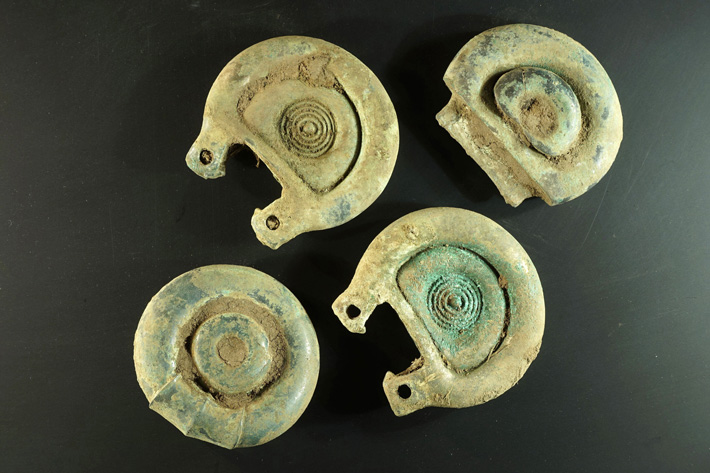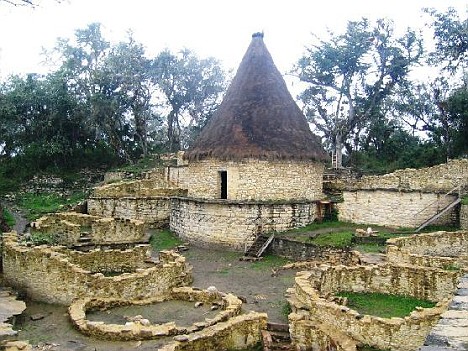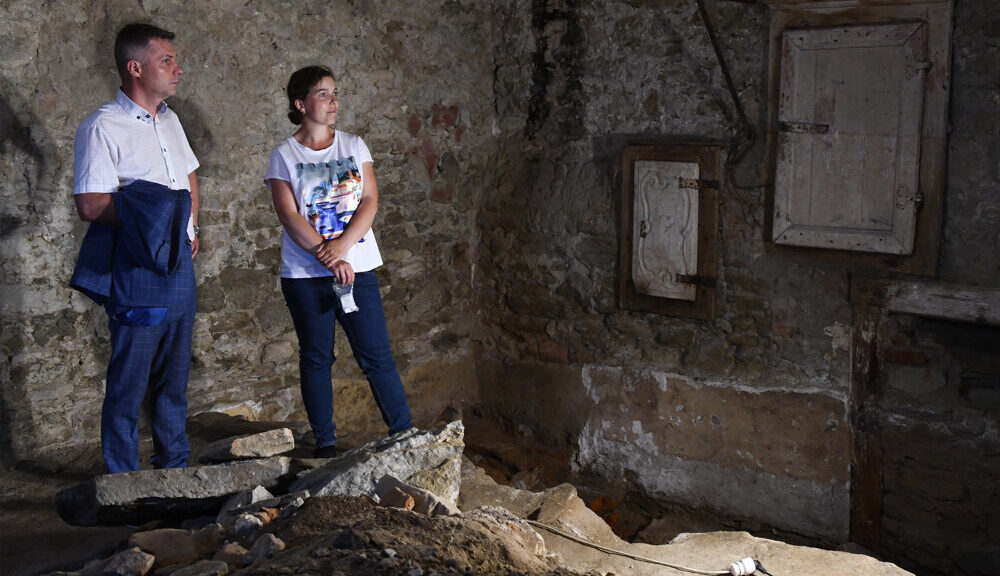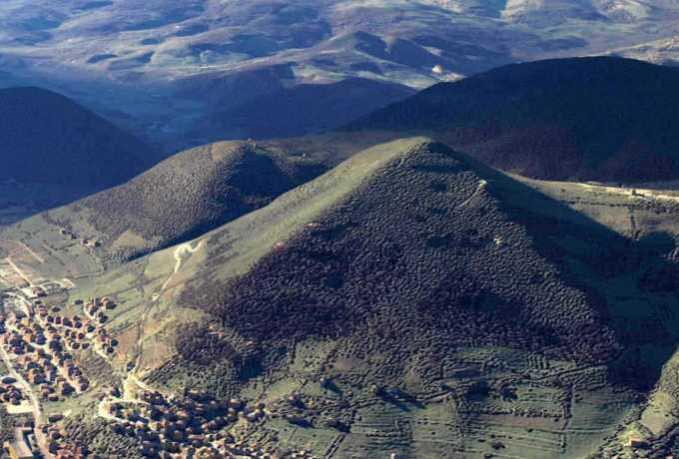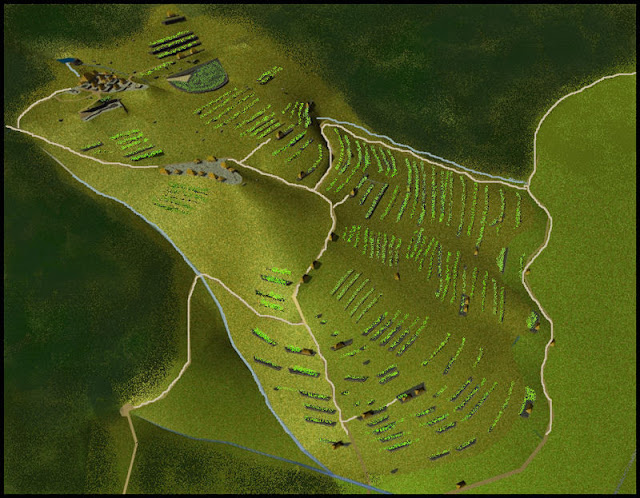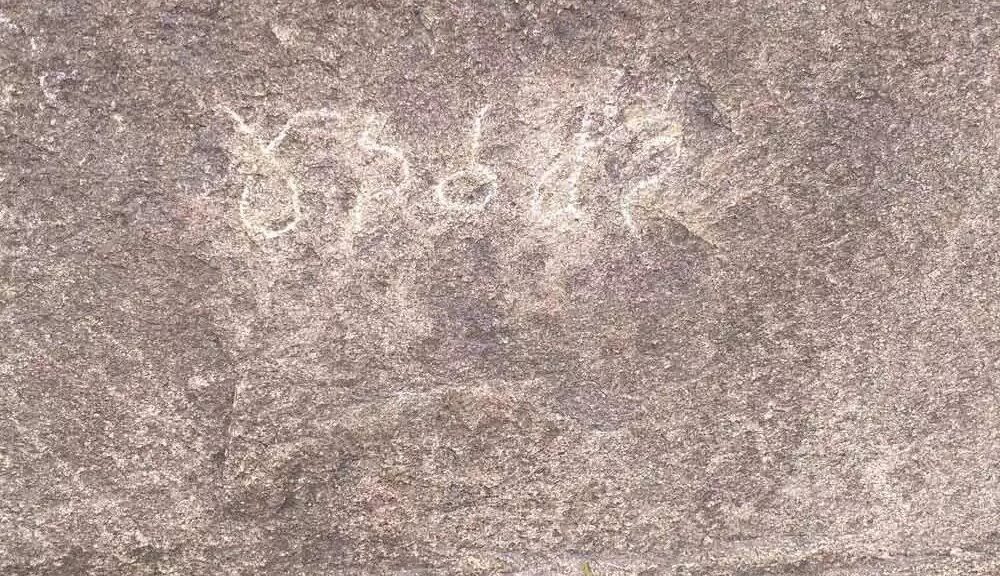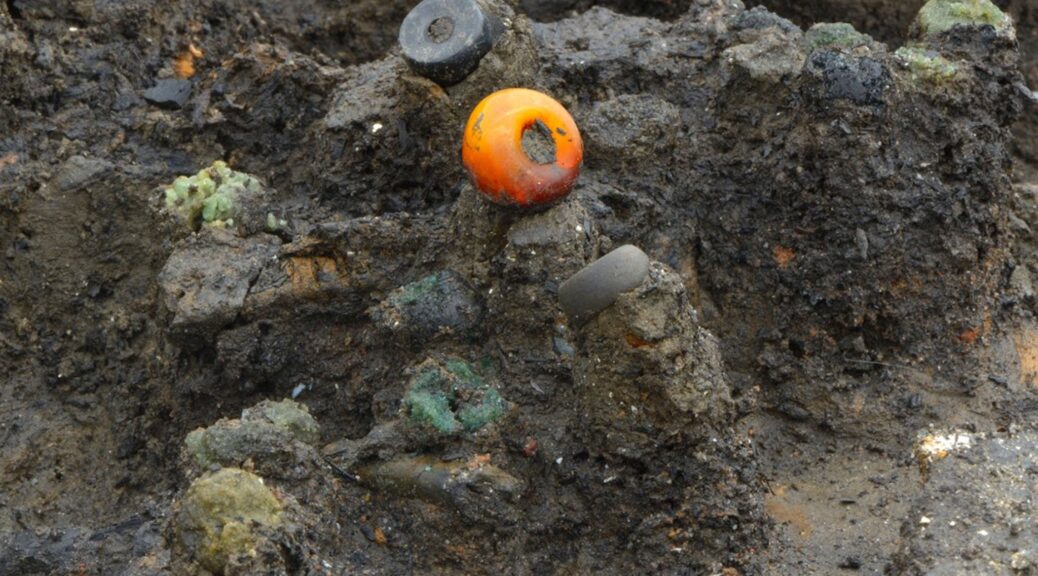Intact 3,000-Year-Old Horse Harness Unearthed in Scotland
A metal detectorist has discovered a rare hoard of Bronze Age artifacts, which experts describe as “nationally significant”, in the Scottish Borders. Mariusz Stepien was searching a field near Peebles with friends when he found a bronze object buried half a meter (1ft 8in) underground. Archaeologists called to the site near Peebles also excavated decorated straps, buckles, rings, ornaments, and chariot wheel axle caps.
Evidence of a decorative ‘rattle pendant’ from the harness was also discovered – the first one to be found in Scotland and only the third in the UK.
The hoard has been moved from the site in a large block of soil and taken to the National Museums Collection Centre in Edinburgh. Experts, who described the objects as ‘nationally significant’, have dated them to the Bronze Age, which began around 2,000 BC and lasted for nearly 1,500 years.

The period marks a time when bronze gradually replaced stone as the main material for making tools. Communities in Late Bronze Age Scotland (1000-800 BC) often buried hoards of metalwork.
‘This is a nationally significant find – so few Bronze Age hoards have been excavated in Scotland,’ said Emily Freeman, head of the Treasure Trove Unit (TTU) overseeing the recovery and assessment of the find.
It was an amazing opportunity for us to not only recover bronze artifacts but organic material as well. There is still a lot of work to be done to assess the artifacts and understand why they were deposited.’
The Crown Office, which runs the TTU, told MailOnline it can’t provide a more specific location of the discoveries than ‘near Peebles’ because of the ‘security and privacy concerns of the landowner’.
The collection was promptly reported to TTU and excavated by archaeologists from National Museums Scotland. The metal objects are believed to be decorative and functional pieces of a Bronze Age horse harness, while the sword is still in its scabbard and encrusted within the chunk of rock.
The complete horse harness – preserved by the soil – and the sword have been dated as being from 1000 to 900 BC. These are rare objects, some of which are unique in Scotland,’ said National Museums Scotland. They have affinities with objects across Europe and were likely deposited by a well-connected community.
‘The organic preservation in the hoard is remarkable and includes leather and wood that is three thousand years old.
This allows archaeologists to see how the horse harness was assembled – this has never been seen before in Britain. The hoard was uncovered by Mariusz Stepien, 44, who was searching a field near Peebles with friends on June 21 this year when he found a bronze object buried about a foot and a half underground.

The group camped in the field and built a shelter to protect them find from the elements while archaeologists spent 22 days investigating.
‘I thought I’ve never seen anything like this before and felt from the very beginning that this might be something spectacular and I’ve just discovered a big part of Scottish history,’ said Stepien.
‘I was over the moon, actually shaking with happiness.
‘We wanted to be a part of the excavation from the beginning to the end.
‘I will never forget those 22 days spent in the field. Every day there were new objects coming out which changed the context of the find, every day we learned something new.
‘I’m so pleased that the earth revealed to me something that was hidden for more than 3,000 years. I still can’t believe it happened.’
As he was getting strong signals from the earth around the initial object, Stepien contacted the TTU to report his find. Scotland’s TTU is ‘the first port of call’ for new discoveries and carries out investigations and object assessments of new objects.
All ancient objects newly discovered in Scotland need to be reported to the TTU, as they belong to the Crown, whether or not they’re precious metal. We could not have achieved this without the responsible actions of the finder or the support of the landowners,’ said Freeman.
‘The finder was quick to action when they realized that they had found an in-situ hoard, which resulted in the TTU and National Museums Scotland being on-site within days of discovery.’
